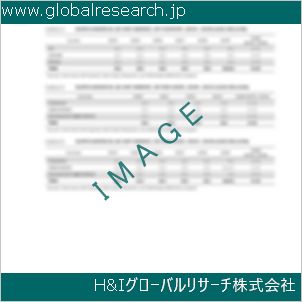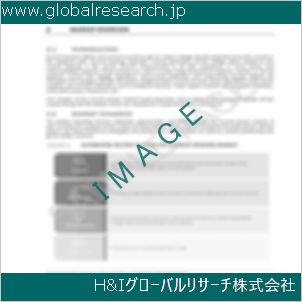Table of Contents
1 Industry Overview of Isobutylene
1.1 Definition and Specifications of Isobutylene
1.1.1 Definition of Isobutylene
1.1.2 Specifications of Isobutylene
1.2 Classification of Isobutylene
1.3 Applications of Isobutylene
1.3.1 Nuclear Application
1.3.2 Non-Nuclear Application
1.4 Industry Chain Structure of Isobutylene
1.5 Industry Overview and Major Regions Status of Isobutylene
1.5.1 Industry Overview of Isobutylene
1.5.2 Global Major Regions Status of Isobutylene
1.6 Industry Policy Analysis of Isobutylene
1.7 Industry News Analysis of Isobutylene
2 Manufacturing Cost Structure Analysis of Isobutylene
2.1 Raw Material Suppliers and Price Analysis of Isobutylene
2.2 Equipment Suppliers and Price Analysis of Isobutylene
2.3 Labor Cost Analysis of Isobutylene
2.4 Other Costs Analysis of Isobutylene
2.5 Manufacturing Cost Structure Analysis of Isobutylene
2.6 Manufacturing Process Analysis of Isobutylene
3 Technical Data and Manufacturing Plants Analysis of Isobutylene
3.1 Capacity and Commercial Production Date of Global Isobutylene Major Manufacturers in 2023
3.2 Manufacturing Plants Distribution of Global Isobutylene Major Manufacturers in 2023
3.3 R&D Status and Technology Source of Global Isobutylene Major Manufacturers in 2023
3.4 Raw Materials Sources Analysis of Global Isobutylene Major Manufacturers in 2023
4 Capacity, Production and Revenue Analysis of Isobutylene by Regions, Types and Manufacturers
4.1 Global Capacity, Production and Revenue of Isobutylene by Regions 2019-2024
4.2 Global and Major Regions Capacity, Production, Revenue and Growth Rate of Isobutylene 2019-2024
4.3 Global Capacity, Production and Revenue of Isobutylene by Types 2019-2024
4.4 Global Capacity, Production and Revenue of Isobutylene by Manufacturers 2019-2024
5 Price, Cost, Gross and Gross Margin Analysis of Isobutylene by Regions, Types and Manufacturers
5.1 Price, Cost, Gross and Gross Margin Analysis of Isobutylene by Regions 2019-2024
5.2 Price, Cost, Gross and Gross Margin Analysis of Isobutylene by Types 2019-2024
5.3 Price, Cost, Gross and Gross Margin Analysis of Isobutylene by Manufacturers 2019-2024
6 Consumption Volume, Consumption Value and Sale Price Analysis of Isobutylene by Regions, Types and Applications
6.1 Global Consumption Volume and Consumption Value of Isobutylene by Regions 2019-2024
6.2 Global and Major Regions Consumption Volume, Consumption Value and Growth Rate of Isobutylene 2019-2024
6.3 Global Consumption Volume and Consumption Value of Isobutylene by Types 2019-2024
6.4 Global Consumption Volume and Consumption Value of Isobutylene by Applications 2019-2024
6.5 Sale Price of Isobutylene by Regions 2019-2024
6.6 Sale Price of Isobutylene by Types 2019-2024
6.7 Sale Price of Isobutylene by Applications 2019-2024
6.8 Market Share Analysis of Isobutylene by Different Sale Price Levels
7 Supply, Import, Export and Consumption Analysis of Isobutylene
7.1 Supply, Consumption and Gap of Isobutylene 2019-2024
7.2 Global Capacity, Production, Price, Cost, Revenue, Supply, Import, Export and Consumption of Isobutylene 2019-2024
7.3 USA Capacity, Production, Price, Cost, Revenue, Supply, Import, Export and Consumption of Isobutylene 2019-2024
7.4 EU Capacity, Production, Price, Cost, Revenue, Supply, Import, Export and Consumption of Isobutylene 2019-2024
7.5 China Capacity, Production, Price, Cost, Revenue, Supply, Import, Export and Consumption of Isobutylene 2019-2024
7.6 Japan Capacity, Production, Price, Cost, Revenue, Supply, Import, Export and Consumption of Isobutylene 2019-2024
8 Major Manufacturers Analysis of Isobutylene
8.1 Manufacturer One
8.1.1 Company Profile
8.1.2 Product Picture and Specifications
8.1.2.1 Type I
8.1.2.2 Type II
8.1.2.3 Type III
8.1.3 Capacity, Production, Price, Cost, Gross and Revenue
8.1.4 Contact Information
8.2 Manufacturer Two
8.2.1 Company Profile
8.2.2 Product Picture and Specifications
8.2.2.1 Type I
8.2.2.2 Type II
8.2.2.3 Type III
8.2.3 Capacity, Production, Price, Cost, Gross and Revenue
8.2.4 Contact Information
8.3 Manufacturer Three
8.3.1 Company Profile
8.3.2 Product Picture and Specifications
8.3.2.1 Type I
8.3.2.2 Type II
8.3.2.3 Type III
8.3.3 Capacity, Production, Price, Cost, Gross and Revenue
8.3.4 Contact Information
8.4 Manufacturer Four
8.4.1 Company Profile
8.4.2 Product Picture and Specifications
8.4.2.1 Type I
8.4.2.2 Type II
8.4.2.3 Type III
8.4.3 Capacity, Production, Price, Cost, Gross and Revenue
8.4.4 Contact Information
8.5 Manufacturer Five
8.5.1 Company Profile
8.5.2 Product Picture and Specifications
8.5.2.1 Type I
8.5.2.2 Type II
8.5.2.3 Type III
8.5.3 Capacity, Production, Price, Cost, Gross and Revenue
8.5.4 Contact Information
…
9 Marketing Trader or Distributor Analysis of Isobutylene
9.1 Marketing Channels Status of Isobutylene
9.2 Traders or Distributors with Contact Information of Isobutylene by Regions
9.3 Ex-work Price, Channel Price and End Buyer Price Analysis of Isobutylene
9.4 Regional Import, Export and Trade Analysis of Isobutylene
10 Industry Chain Analysis of Isobutylene
10.1 Upstream Major Raw Materials Suppliers Analysis of Isobutylene
10.1.1 Major Raw Materials Suppliers with Contact Information Analysis of Isobutylene
10.1.2 Major Raw Materials Suppliers with Supply Volume Analysis of Isobutylene by Regions
10.2 Upstream Major Equipment Suppliers Analysis of Isobutylene
10.2.1 Major Equipment Suppliers with Contact Information Analysis of Isobutylene
10.2.2 Major Equipment Suppliers with Product Pictures Analysis of Isobutylene by Regions
10.3 Downstream Major Consumers Analysis of Isobutylene
10.3.1 Major Consumers with Contact Information Analysis of Isobutylene
10.3.2 Major Consumers with Consumption Volume Analysis of Isobutylene by Regions
10.4 Supply Chain Relationship Analysis of Isobutylene
11 Development Trend of Analysis of Isobutylene
11.1 Capacity, Production and Revenue Forecast of Isobutylene by Regions and Types
11.1.1 Global Capacity, Production and Revenue of Isobutylene by Regions 2024-2029
11.1.2 Global and Major Regions Capacity, Production, Revenue and Growth Rate of Isobutylene 2024-2029
11.1.3 Global Capacity, Production and Revenue of Isobutylene by Types 2024-2029
11.2 Consumption Volume and Consumption Value Forecast of Isobutylene by Regions, Types and Applications
11.2.1 Global Consumption Volume and Consumption Value of Isobutylene by Regions 2024-2029
11.2.2 Global and Major Regions Consumption Volume, Consumption Value and Growth Rate of Isobutylene 2024-2029
11.2.3 Global Consumption Volume and Consumption Value of Isobutylene by Types 2024-2029
11.2.4 Global Consumption Volume and Consumption Value of Isobutylene by Applications 2024-2029
11.3 Supply, Import, Export and Consumption Forecast of Isobutylene
11.3.1 Supply, Consumption and Gap of Isobutylene 2024-2029
11.3.2 Global Capacity, Production, Price, Cost, Revenue, Supply, Import, Export and Consumption of Isobutylene 2024-2029
11.3.3 USA Capacity, Production, Price, Cost, Revenue, Supply, Import, Export and Consumption of Isobutylene 2024-2029
11.3.4 EU Capacity, Production, Price, Cost, Revenue, Supply, Import, Export and Consumption of Isobutylene 2024-2029
11.3.5 China Capacity, Production, Price, Cost, Revenue, Supply, Import, Export and Consumption of Isobutylene 2024-2029
11.3.6 Japan Capacity, Production, Price, Cost, Revenue, Supply, Import, Export and Consumption of Isobutylene 2024-2029
12 New Project Investment Feasibility Analysis of Isobutylene
12.1 New Project SWOT Analysis of Isobutylene
12.2 New Project Investment Feasibility Analysis of Isobutylene
13 Conclusion of the Global Isobutylene (CAS 115-11-7) Industry 2024 Market Research Report
| ※参考情報 イソブチレンは、化学式 C₄H₈ で表される有機化合物であり、CAS番号 115-11-7 で特定されます。この化合物は、常温常圧で無色の気体ですが、特有の甘い香りを持つことが特徴です。イソブチレンは、主にブチレン類に分類される不飽和炭化水素であり、二重結合を含む構造をしています。このため、化学反応においては高い反応性を持ち、多様な用途があることが特徴です。 イソブチレンは、主に石油から生産される原料化学品です。特に、石油の精製過程において得られる軽質油やナフサを被加工し、クラッキングなどの工程を通じて生成されます。生成過程では、プロピレンやブタンなどとともに得られることが多く、化学工業において重要な原料とされています。 その化学的特性から、イソブチレンは多くの化学反応に利用されます。例えば、仲間にあたる二重結合を持つ化合物との付加反応や、ポリマー化反応によってポリイソブチレンを生成することができます。ポリイソブチレンは、ゴム製品や接着剤、密封剤、さらには自動車用部品などへの用途が広がっており、その特性から耐薬品性や耐熱性に優れた材料を提供します。 また、イソブチレンはメタクリル酸エステルの合成にも幅広く使用されており、アクリル樹脂や塗料、接着剤の成分として利用されることがあります。このように、化学合成の原料としての重要性が高く、幅広い業界で利用されています。 イソブチレンの利用は、化学工業にとどまらず、日常生活においても多岐にわたります。例えば、ポリイソブチレンは自動車のタイヤの接着剤やシーリング用途に用いられるほか、医療関連製品の一部としても活躍しています。また、イソブチレンの特性を利用して、特殊な機能を持つ材料の開発にも取り組まれています。 さらには、イソブチレンはエネルギー産業や環境問題への影響も考慮される化合物です。バイオマスからの生産など、持続可能な手法での生成が進められており、化石燃料に依存しないエコロジーな選択肢として注目されています。これにより、地球温暖化や資源枯渇の問題に対処するための一助となる可能性があります。 さらに、イソブチレンを活用した新しい技術や製品開発も進められています。例えば、先進材料としての機能性コーティングや高性能プラスチックの開発が行われており、これによりさまざまな産業への応用が期待されています。将来的には、イソブチレンの特性を最大限に生かした新製品が登場する可能性があり、さらに多くの分野で利用されることになるでしょう。 イソブチレンには、いくつかの異性体や類似物質がありますが、その中でも特に重要なのはポリマー化することによって得られるポリイソブチレンです。これは、可塑剤や接着剤、医療用途にも使われるため、非常に高い商業価値を持っています。これに関する研究開発も活発であり、さまざまな特性を持つポリイソブチレン材料の特性を改良するための研究が行われています。 さらに、イソブチレンの取り扱いには注意が必要です。無毒ではありますが、可燃性があり高濃度では麻酔作用があるため、適切な安全対策が求められます。特に工業的な取り扱いにおいては、引火のおそれがあるため、換気や防爆設備が整った環境での運用が必要です。 イソブチレンは、このように化学的特性や産業への応用面で極めて重要な化合物であり、その価値は今後も増していくと考えられます。環境問題への対応や新技術の開発が進む今、イソブチレンを基盤とした持続可能な社会の実現に向けて、さらなる研究や応用が期待されます。これを通じて、持続可能な産業の発展に貢献することが重要となるでしょう。 |
❖ 免責事項 ❖
http://www.globalresearch.jp/disclaimer












